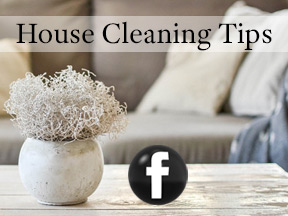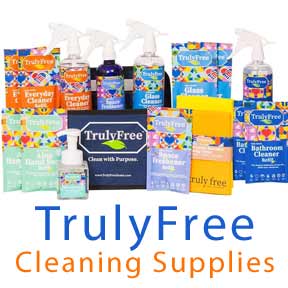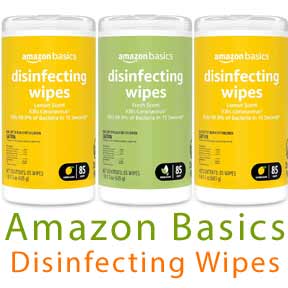How to DeClutter and Organize

How to Declutter and Organize Rooms.
How to DeClutter and Organize the House
Keeping a tidy home can feel overwhelming, but with the right approach, decluttering can be simple and even enjoyable. Over time, we all accumulate items – some sentimental, some practical, and some we simply don’t know what to do with. The key is to be intentional, take small steps, and create a system that works for you so it’s important to know how to declutter and organize around the house.
Before You Begin: What Do You Want From Your Space?
Instead of feeling stuck in a cluttered space, imagine a home where everything has a place, where you can easily find what you need, and where your surroundings bring you peace instead of stress.
Decluttering and organizing aren’t just about getting rid of things – they are about shaping your home to support your lifestyle and reflect what matters most to you. Before you start, take a moment to think about what you truly want when you declutter and organize:
- What matters most to you in life? (Family time? Creativity? Relaxation? Productivity?)
- How do you want your home to feel? (Calm and cozy? Minimalist and sleek? Lively and inspiring?)
- What’s currently standing in the way of that vision? (Too much stuff? Disorganization? Lack of storage?)
Having a clear goal will make it easier to decide what to keep, what to let go of, and how to organize what remains.
Declutter vs. Organize: What’s the Difference?
Before we dive in, let’s clarify: Decluttering and organizing are not the same thing.
- When you Declutter it’s about removing unnecessary items – things you no longer need, use, or love.
- Organizing is about arranging what remains in a way that makes sense and enhances your daily life.
The best approach? Declutter first, then organize. There’s no point in organizing things you don’t actually need!
Tackling the Most Cluttered Areas
How to declutter and organize areas of the house that often become catch-alls for unwanted items – things we don’t need, don’t use, or may not even want.
Bookcases: Are They Storage or Just a Catch-All?
Bookcases are meant for books, but they often become a dumping ground for random items. Ask yourself:
- Do I actually use or love these books? If not, donate them to a library or charity.
- Are there non-book items here that belong elsewhere? Relocate them to their proper places.
- Can I make better use of this space? Try grouping books by genre, color, or frequency of use.
A well-organized bookshelf looks great and is easier to use.
Cupboards: Hidden Clutter Zones
Cupboards tend to hide forgotten and unnecessary items. Go through them with a critical eye:
- Bathroom cupboards: Toss expired medications, old makeup, and broken appliances.
- Kitchen cupboards: Get rid of unused mugs, duplicate kitchenware, and expired food.
- Storage cupboards: If you haven’t used it in a year, ask yourself why you’re keeping it.
If an item is still good but not useful to you, donate it!
Coat Closets: What’s Hiding in There?
A closet should help you find what you need – not be a black hole of forgotten stuff. You know you have too much if:
- You dread opening the door for fear of an avalanche.
- You have to dig through piles just to find one thing.
- You know you have an item, but can’t remember where it is.
Sort through your closet and keep only what you use and love. Everything else? Donate, toss, or store properly.
Bedroom Closets: Clothing You Actually Wear
We often hold onto clothes we never wear because they were expensive, sentimental, or “might fit again someday.” Here’s how to declutter with confidence:
- Try on everything. Just because it fits doesn’t mean you should keep it.
- Ask yourself: “Would I buy this today?” If not, let it go.
- Be honest: If it’s damaged, outdated, or doesn’t suit you, donate or toss it.
- Make space for new favorites! A decluttered closet makes getting dressed easier and more enjoyable.
Linen Closets: Too Many Towels & Sheets?
Do you really need ten old towels with holes? Or sheets for a bed you no longer own?
- Keep only 2-3 sets per bed and a few towels per person.
- Donate or repurpose old linens for pet shelters or cleaning rags.
- Store blankets and extra pillows neatly in bins or baskets.
A well-organized linen closet saves you time when you need fresh sheets or towels.
Steps to Start Removing Clutter
Decluttering doesn’t have to be overwhelming – take it one area at a time. Here’s a simple sorting system to help:
Grab Some Bags & Boxes
- Keep – Items you need and use regularly.
- Donate – Good-condition items someone else could use.
- Recycle – Paper, glass, or plastic that can be repurposed.
- Trash – Anything broken, expired, or useless.
- Give Away – Things a friend or family member might want.
- Sell – Items valuable enough for a garage sale or resale site.
- Belongs Elsewhere – Things that need to be put in their proper place.
This method forces you to make decisions quickly and keeps clutter from creeping back.
DeClutter and Organize Makes Your Home Functional & Beautiful
Once you’ve decluttered, it’s time to organize what remains in a way that makes your home both functional and visually appealing. Organization isn’t about achieving perfection—it’s about creating a space that works for you and supports your daily routines.
Smart Storage Solutions
- Use baskets, bins, and drawer dividers to keep everything neat and easily accessible.
- Label storage containers so everyone in the household knows where things belong. This helps maintain order effortlessly.
- Store like items together – keep all baking supplies in one cupboard, office supplies in one drawer, and cleaning products in one designated area.
- Utilize vertical space with shelves, over-the-door organizers, pegboards, and hanging racks to maximize storage without taking up floor space.
Creative and Aesthetic Touches
- Choose stylish storage – wicker baskets, decorative bins, and matching jars can make storage both practical and attractive.
- Display what you love – use open shelving for books, plants, or meaningful décor instead of clutter.
- Rotate seasonal items—store away winter coats, summer gear, or holiday decorations when not in use to free up space.
- Think multifunctional – opt for furniture with hidden storage, like ottomans that open up or beds with built-in drawers.
Daily Habits to Maintain Organization
- Adopt the “one in, one out” rule – whenever you bring in something new, donate or discard something old.
- Commit to a 5-minute tidy-up routine each night to prevent small messes from turning into big clutter.
- Create designated drop zones for keys, mail, shoes, and bags to keep everyday essentials organized.
- Make use of digital organization – scan important documents and reduce paper clutter.
With a little creativity and consistency, organizing can transform your home into a space that feels both beautiful and effortless to maintain.
Maintaining a Clutter-Free Home
Decluttering once is great, but keeping your home clutter-free is even better! Try these habits:
- One in, one out: If you buy something new, let go of something old.
- Daily resets: Spend 5-10 minutes a day tidying up.
- Declutter seasonally: Go through your home every few months and reassess what you truly need.
- Teach your family: Get everyone involved so clutter doesn’t build up again.
When you DeClutter and Organize it Feels Amazing
Decluttering and organizing isn’t just about cleaning – it’s about creating a home you love.
When you reduce clutter, you save time, lower stress, and actually enjoy your space. So take that first step today – your future self will thank you!
Give Yourself a Treat for a Job Well Done!
Decluttering and organizing can be hard work, but it’s worth it! Why not reward yourself for your efforts? Whether it’s a new outfit, a nice dinner, or simply enjoying your fresh, organized space, take a moment to celebrate.
Your home should be a place of peace, not stress. Start small, stay consistent, and you’ll love the results!






